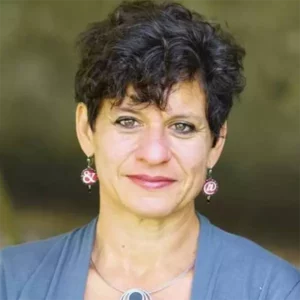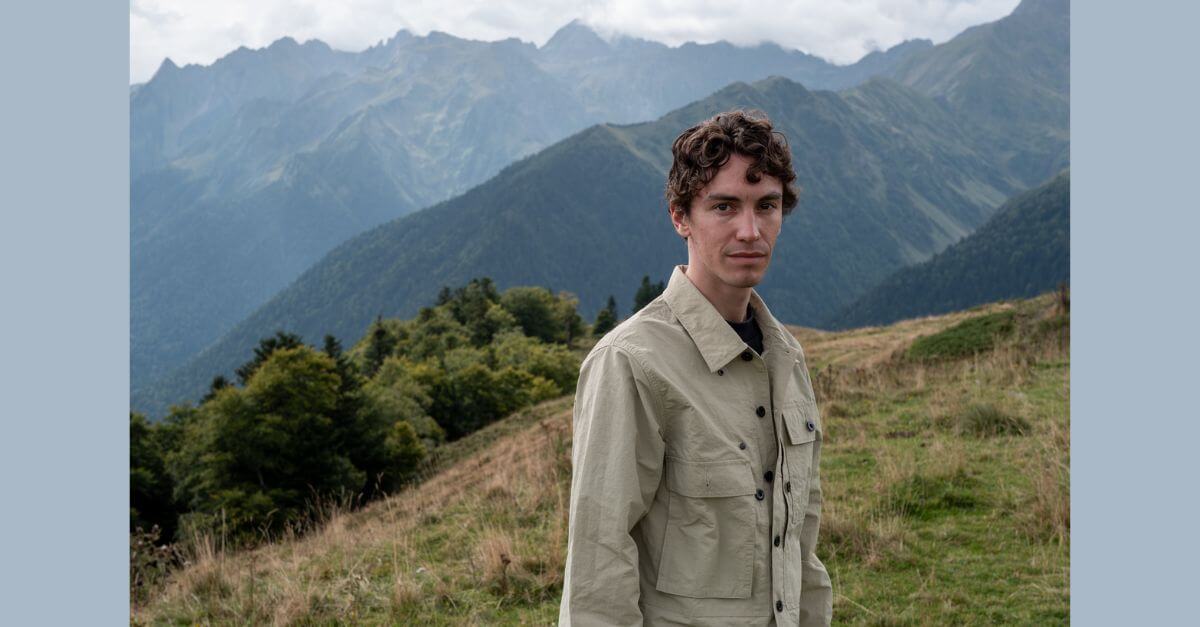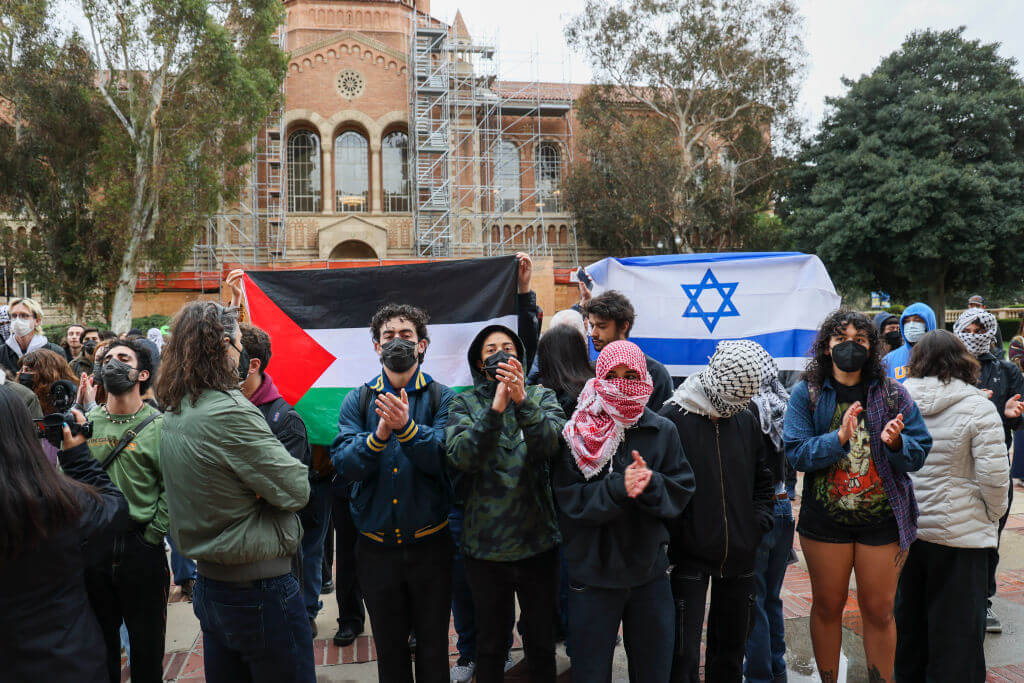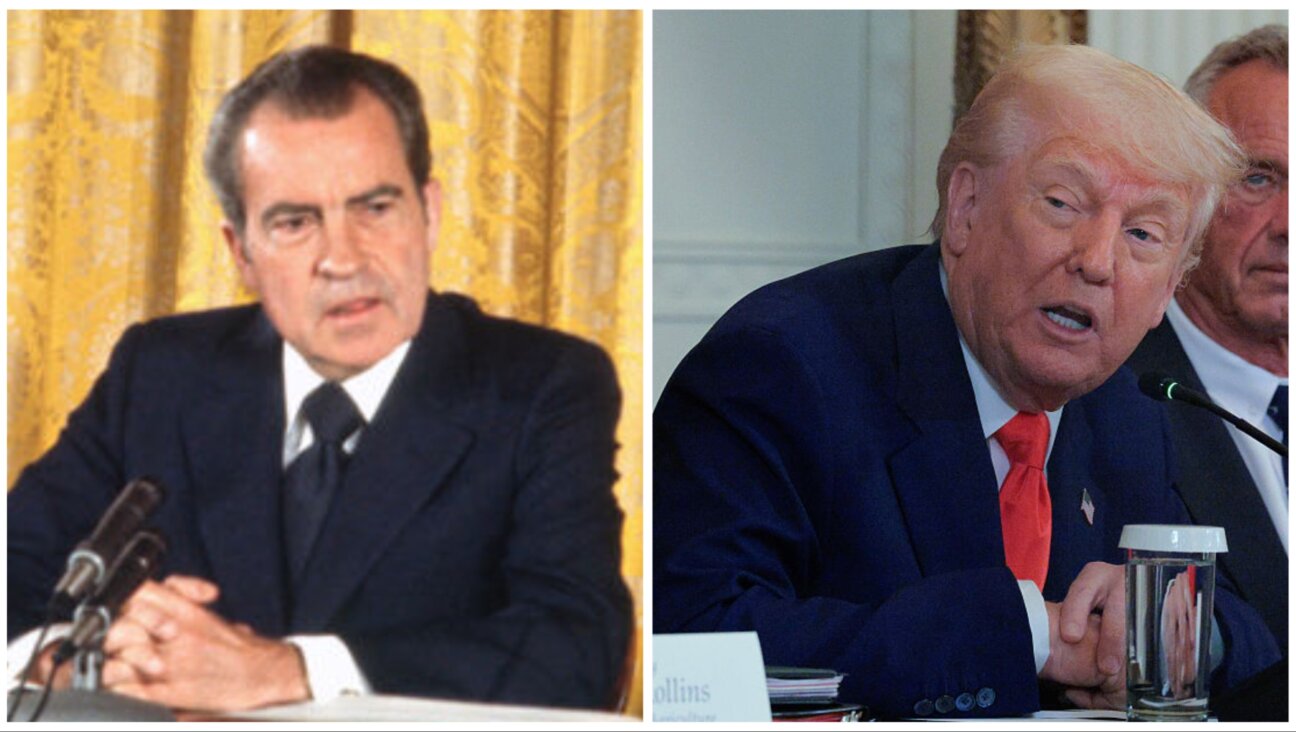My abortion story — because it’s true and we should not be afraid to talk about it
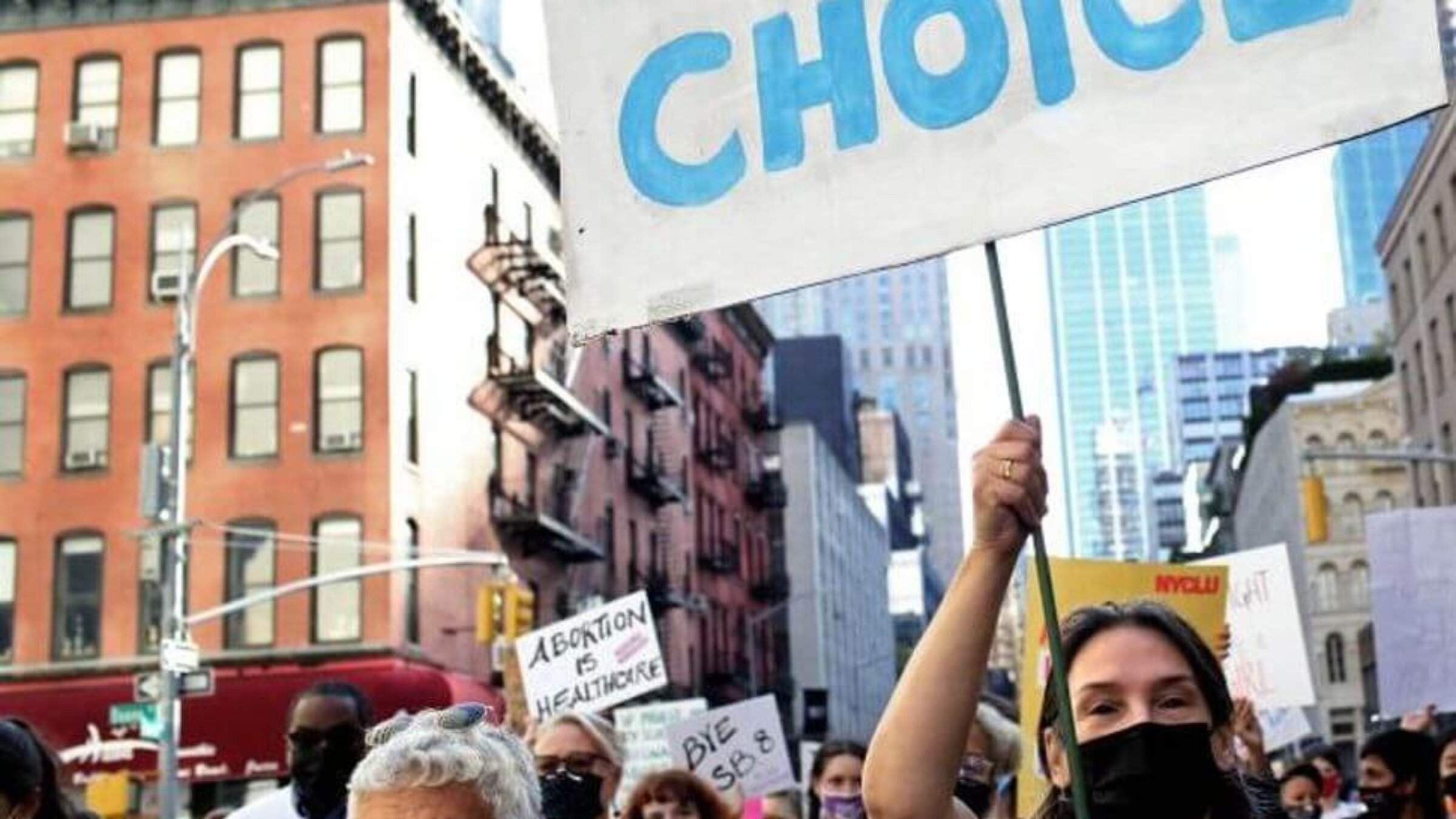
Photo by Getty Images
This is an adaptation of Looking Forward, a weekly email from our editor-in-chief sent on Friday afternoons. Sign up here to get the Forward’s free newsletters delivered to your inbox.
I’ve been pregnant twice. I’ve had two abortions. And I have two healthy, wondrous children who recently turned 14.
I used to frame my fertility saga as a sort of riddle: “I’ve been pregnant twice, had two abortions — how many children do I have?” But abortion is not really an appropriate subject for riddles, especially not now.
Not with Texas having enacted a law outlawing the procedure in almost all circumstances. Not with the Supreme Court poised this term to possibly dismantle Roe v. Wade, the landmark 1973 ruling that gave me the constitutional right to choose how to build my family.
I’ve told my abortion story to friends, family and, yes, to my children — it is part of their origin story, the story of how we chose to bring them into this world. I’m telling it publicly now for the first time.
The Guttmacher Institute estimates that nearly 1 in 4 American women have abortions by age 45, which is certainly more than we tend to hear about in polite conversation. The number of abortions has been dropping for two decades — to 862,000 in 2017, down from about 1.6 million annually through the 1980s.
Mine is perhaps not the most compelling story in making the case for choice. I did not survive a rape or incest; my pregnancies did not endanger my life. My choices were made from a place of profound privilege.
But, alongside the brave congresswomen who testified last week about their abortions, and the more than 1,500 women who have joined the storytelling campaign Abortion Out Loud, I share my experience here because it is true and it is real and we should not be afraid to talk about it.
My husband, Gary, and I started trying to get pregnant soon after our 2004 wedding: I was 34, he was 42, and we were ready. Alas, our bodies were not, so after about 15 months of futility we went to the fertility clinic at Northwestern University. We were among its luckiest patients: our very first intra-uterine insemination (IUI), without even hormone therapy, stuck.
On our doctor’s recommendation, I underwent chorionic villus sampling (CVS) in my first trimester to check for chromosomal and genetic disorders — negative. We also did a blood test to screen for spina bifida and other birth defects — also negative. And so I bought some maternity shirts and proceeded to tell just about everyone I knew that I was expecting.
Get the Forward delivered to your inbox. Sign up here to receive our essential morning briefing of American Jewish news and conversation, the afternoon’s top headlines and best reads, and a weekly letter from our editor-in-chief.
Meanwhile, I got a promotion, to become deputy Metro editor of The New York Times. So as I approached my sixth month — September, 2006 — I moved from Chicago to New York, with Gary planning to follow in a few weeks after finishing up at his work. We were a bit bummed that he’d miss the 20-week “level two” ultrasound, which everyone told us would be this incredible opportunity to glimpse little wiggling fingers and toes, but life happens.
As it turned out, I did not get said ultrasound until the 22nd week, due to a scheduling miscommunication. This being my first pregnancy, I did not realize anything was amiss when the scan stretched to 45 minutes, when the technician kept asking me to turn this way and that, when she finally called in a doctor I had never met to take a look.
“Your fetus has a severe neural tube disorder,” is how I remember him delivering the news. “You should go see your obstetrician immediately to discuss termination.”
Then he gave me his cell-phone number, which underscored the urgency of the situation (this was 2006; doctors did not give out their cell-phone numbers). Ditto the obstetrician, who I’d seen only once before and who rushed me in despite her crowded waiting room.
The scan had found our fetus had club feet and what is known as the “lemon sign” on the brain. Neural-tube defects are one of the things the spina bifida test is supposed to uncover — turns out there are a decent number of false negatives. The doctors said “severe,” but could not be much more precise.
If we continued with the pregnancy, they said, the baby’s physical limitations could range from just those club feet to a lifetime in a wheelchair. Intellectually, we could be looking at anything from maybe graduating high school to profound cognitive disabilities.
And we had to decide quickly — I was approaching the threshold for fetal viability, when abortion is outlawed or prohibited in many states.
I’m a journalist. I needed more information. The OB suggested I get a second opinion, another doctor to read the scan, and soon I was walking as fast as my swollen feet could carry me across Columbus Circle. I had summoned a work friend to hold my hand, and I can still see us in my mind’s eye marching through traffic with Gary on the cellphone telling me what flight he had booked for that night.
The second doctor also advised termination. But that doctor, Mark Evans, was hardly impartial. He was a named plaintiff in the lawsuit that successfully challenged the so-called partial-birth abortion law barring late-term procedures; as he put it, he was in the business of helping women have healthy babies.
Due diligence demanded that I hear the other side, the case for keeping the pregnancy — or, at least, find out what the baby’s life would be like if we did.
A friend whose son was born with a neurological condition pulled some strings to get Gary and me a meeting the next day with the head of pediatric neurosurgery at Columbia, Dr. Neil Feldstein. He told us that if we continued the pregnancy, the baby would likely need an operation within 24 hours of birth, and several more after that. He wasn’t trying to convince us either way, but he made the situation sound pretty grim.
“Who keeps these pregnancies?” I asked.
People who believe abortion is murder, is the blunt answer I remember Dr. Feldstein giving. And, he added, those are the parents who would be your peers as you raised the child.
I imagine it’s not really that simple; the whole point of choice is that you decide what is right for you for whatever reasons are meaningful to you. I’m sure there are people who would not describe abortion as murder but nonetheless accept as fate having a profoundly disabled child — and people who do not find out about such disabilities before birth or early enough to safely and legally terminate.

Demonstrators hold pro-choice signs in Washington Square Park during a Women’s March in New York, U.S., on Saturday, Oct. 2, 2021. Courtesy of Getty
We knew instantly, though, that we are not those people.
Alone together in the middle of an autumn afternoon in Manhattan, Gary and I held hands on the subway downtown, and then on a series of escalators up through a very large and very empty Times Square multiplex. A matinee seemed both a bit absurd and the only thing that might distract us for a minute.
We saw “Across the Universe,” a story of love, war and peace set to songs by the Beatles. And cried.
We flew back to Chicago to have the procedure at Northwestern — New York didn’t yet feel like home. We were told we had to get it done before 23 weeks, then considered a viability threshold, and so it was that my first abortion was on Yom Kippur.
In the few days since the ultrasound, we had entered a new universe of traumatic pregnancies and heart-wrenching choices. Acquaintances and colleagues poured forth with stories of their infertility struggles, late-term miscarriages and stillbirths, diagnoses of birth defects and more. It was comforting — and overwhelming. Online, there were endless resources and communities devoted to discussing these decisions and their aftermaths.
Many of these forlorn would-be parents had held their aborted or stillborn fetuses, given them names, created funeral-like ceremonies, so I asked our Conservative rabbi what, if anything, Jewish law had to say about such a situation. Could we possibly have to sit shiva or say kaddish?
No, he said clearly. The aborted fetus should be considered medical waste, not a person. No name, no Jewish burial — unless doing those things would help us cope, in which case it probably wasn’t prohibited.
Two months after the abortion, our new fertility clinic in New York cleared us to try again. Though IUI had worked the first time, the doctors urged going straight to the more involved in-vitro fertilization, with hormones. Once again, we were lucky and the first round stuck.
By then I was 36, or what those clinics call “of advanced maternal age,” so the doctors said we should implant all three of the healthy embryos we had produced, to maximize the chance of at least one sticking. I pointed out that I’d had no problem carrying the prior fetus, and suggested implanting two, given the much higher risks to both me and the babies of carrying triplets versus twins. But they insisted on three — and, yes, all three stuck.
I don’t remember the specific data we were given about the relative risks, and of course science has advanced since then. I do remember the numbers were quite stark — triplets were radically less likely to make it to full term or to be born without serious health problems.
Only months earlier, we had chosen to terminate a disabled fetus in hopes of making a healthy one. Why would we now risk having three disabled babies rather than giving ourselves the best shot at two healthy ones? We went back to see Dr. Evans for what is known as “selective reduction” — my second abortion in less than a year.
It’s an apt euphemism, “selective reduction,” because you get to — have to — select which fetus to “reduce.” First, they do chromosome tests: none of our three showed any signs of problems. Then they check the positions in the womb to see if one is easier to remove without jostling the others — no, in my case. And then Dr. Evans asked if we’d like to choose based on gender.

Women’s rights activists share a moment as they gather at Freedom Plaza for a pre-march rally of the annual Women’s March October 2, 2021 in Washington, DC. Courtesy of Getty
That shook me a little. Definitely not was the answer — we would be equally happy with two boys, two girls, one of each, nonbinary, whatever. The idea of people being able to select for gender — being able to terminate a pregnancy if they didn’t like the fetus’s gender — seemed unsettling, wrong, even dangerous.
But I understood that someone else’s wish to choose their baby’s gender was bound up in the constitutional right to choose that I believed in — the right I was about to exercise for the second time in less than a year for reasons someone else might well find unsettling, wrong, even dangerous.
We told Dr. Evans to just pick at random, but I’ve always thought he selected based on gender anyhow, leaving us with one boy and one girl because that’s what everyone seems to think everyone wants. That part of the story makes me uncomfortable. But it’s also real and true and so I’m trying not to be afraid to talk about it.
I almost never think about the babies we didn’t have. I started writing a sentence here about how when I see profoundly disabled children and their parents, I feel … but it felt fake. I don’t think I necessarily experience that differently from anyone else. I do not imagine some alternate path for our lives; I do not feel guilty. I do think those parents are heroes, but I bet they just feel like parents.
I threw up every day — Every. Single. Day — of my second pregnancy, which didn’t make it to full term. The twins came by emergency Caesarean section at 32.5 weeks. They spent 15 days in the Neonatal Intensive Care Unit, but only because of their size — Lev was 4 pounds, 8 ounces; Shayna 4 pounds, 1 ounce. They were blissfully free of any medical problems despite their prematurity, and we were frankly somewhat grateful to have them in expert hands during those first weeks.
Shayna has grown into an accomplished artist, currently doing a drawing a day for “Inktober.” Lev is a video-streaming savant who just got elected class rep at his high school. They are curious, clever, mostly kind and occasionally annoying.
They were maybe 11 years old when they asked questions about IVF that made it feel dishonest not to tell them the story. The hardest thing was explaining the reduction — I knew they must have been thinking: that could have been me.
Last November, the twins were called to the Torah as bnei mitzvah, reading from Parshat Toledot, the fraught story of those biblical twins, Jacob and Esau. Lev’s dvar Torah questioned why Esau was “canceled” when it was Jacob who lied and tricked his brother and father. Shayna argued against conforming to norms and expectations — “ordinary,” she noted, “is just another word for stereotypes.”
Oh, we were proud. Of course I cannot imagine life without them — but they are only here because I had the first abortion, and they are only exactly who they are because of the second.
Maybe it is a bit of a riddle — choice; life itself. A riddle that allows room for all kinds of choices — and ways to live with them.
